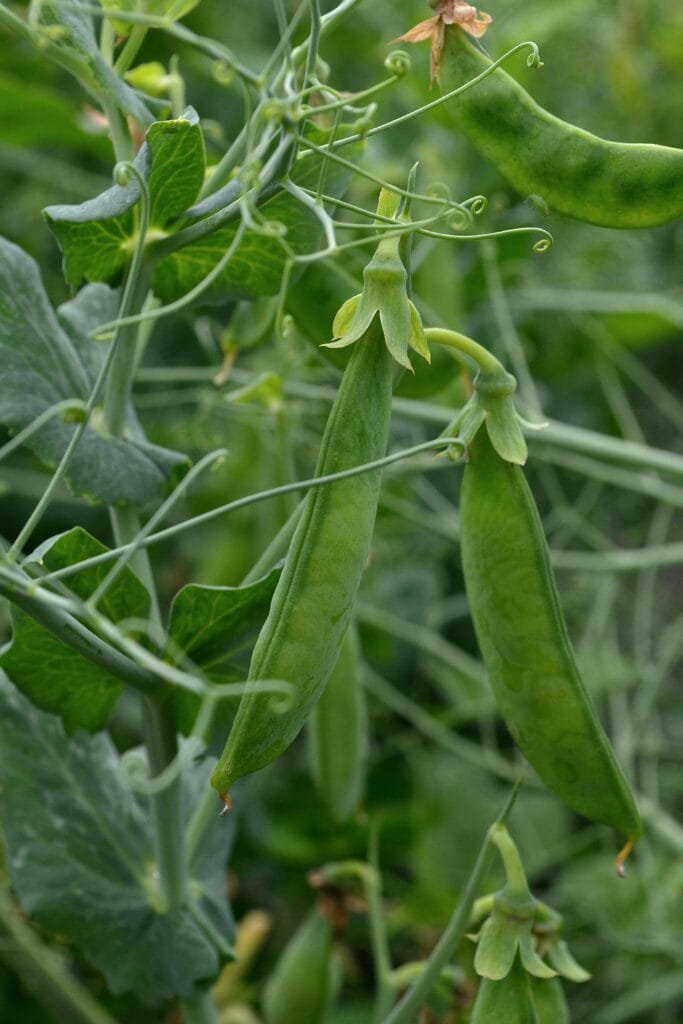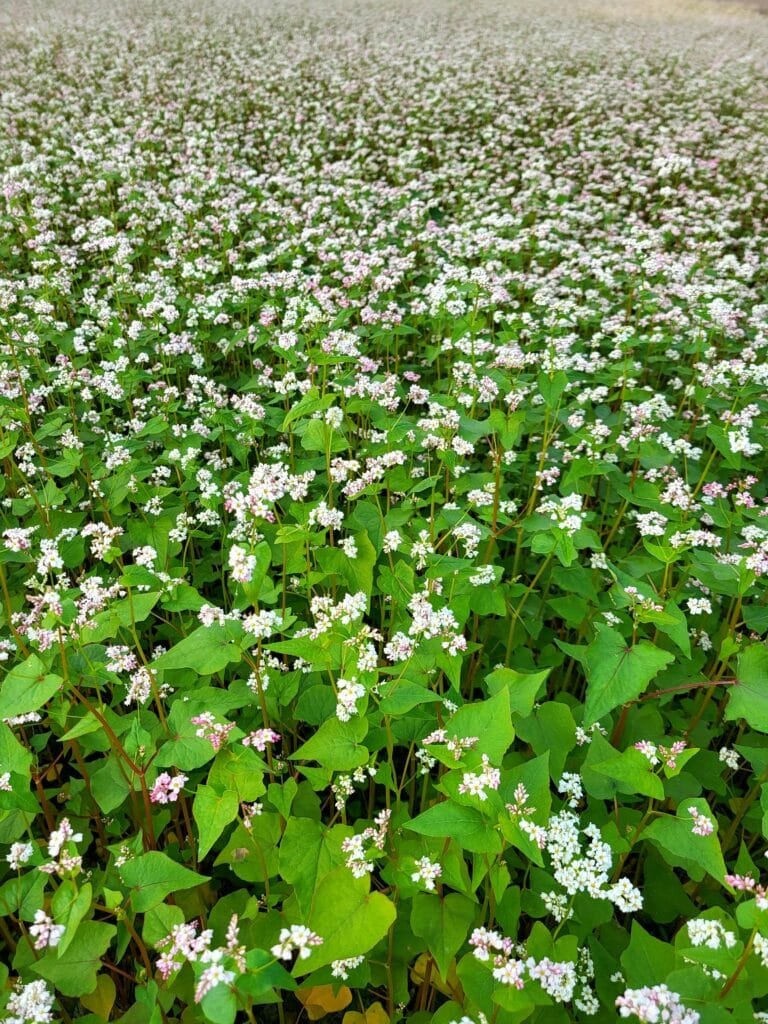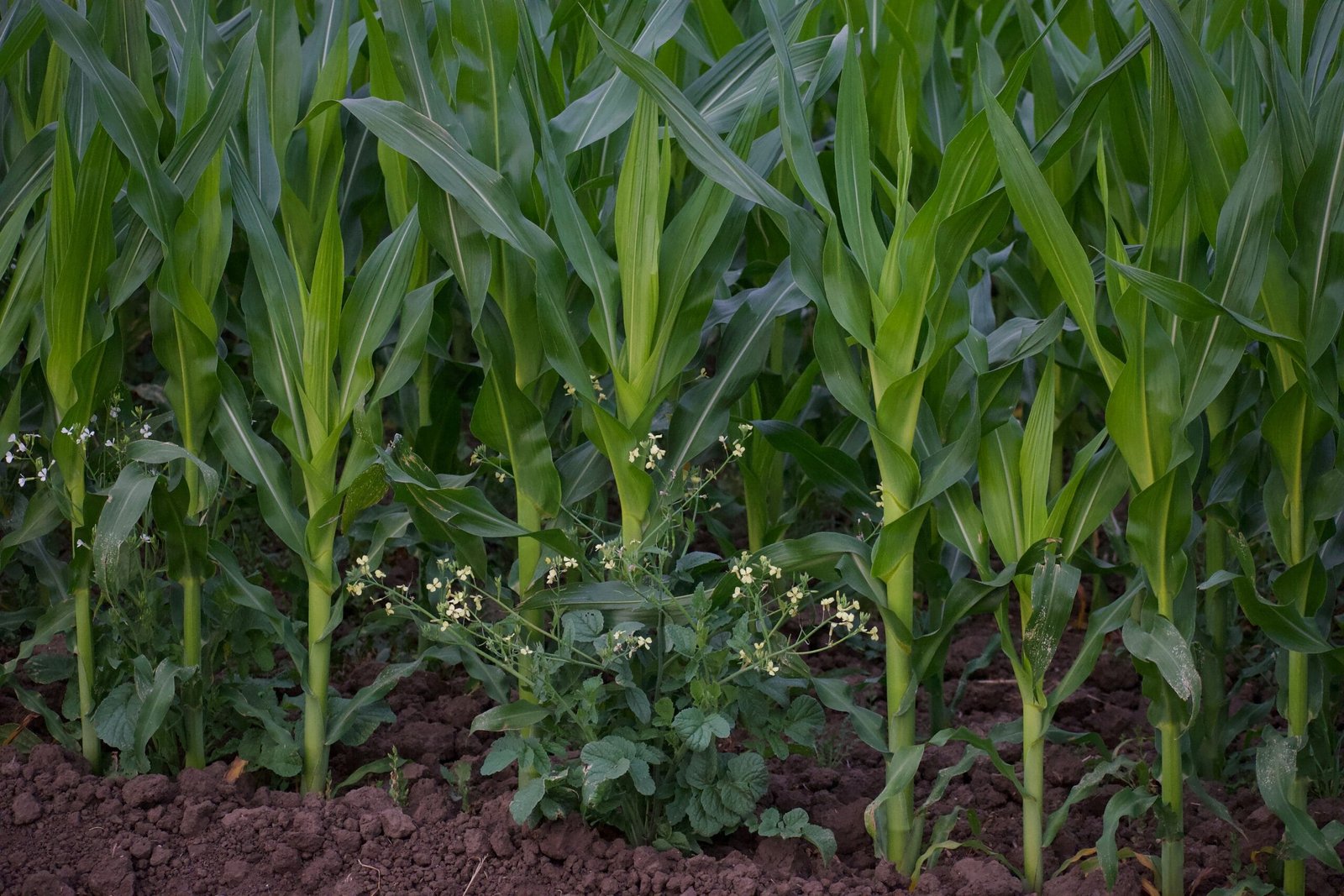Selecting the best cover crops can improve soil structure, provide essential nutrients, and mitigate erosion. Cover crops play a crucial role in enhancing soil health and productivity. By incorporating these plants into agricultural practices, gardeners can create a thriving environment for their main crops while also benefiting the ecosystem.
This article explores the five best cover crops that can significantly enhance soil quality and fertility. Each cover crop serves a distinct purpose and can be tailored to various farming situations. Understanding the advantages of each will help gardeners make informed decisions about their soil management strategies.
Key Takeaways
- Cover crops improve soil structure and boost nutrient levels.
- Selecting the right cover crop is essential for specific farming needs.
- Implementing cover crops can enhance crop rotation practices.
Benefits of Cover Crops
Cover crops offer numerous benefits for enhancing soil health and improving agricultural productivity. They improve soil fertility, control erosion, suppress weeds, manage pests, and conserve moisture. Each benefit contributes to more sustainable farming practices and healthier ecosystems.
Soil Fertility Enhancement
Cover crops play a vital role in enhancing soil fertility. They can add organic matter, which improves soil structure and nutrient content. When cover crops decompose, they release essential nutrients, including nitrogen, phosphorus, and potassium, into the soil.
Leguminous cover crops, such as clover and vetch, possess the unique ability to fix atmospheric nitrogen, making it available for subsequent crops. This reduces the need for synthetic fertilizers, which can be costly and harmful to the environment.
Additionally, their roots promote microbial activity in the soil. This activity further enhances nutrient availability, creating a robust soil ecosystem.
Erosion Control
Soil erosion is a significant concern for gardeners and the environment. Cover crops reduce this risk by providing ground cover that protects the soil from erosion. Their dense root systems anchor the soil, preventing it from being washed or blown away.
These crops are especially effective during off-seasons when fields would usually be bare. By covering the soil, they not only prevent erosion but also improve water infiltration. This results in improved moisture retention and a healthier soil profile.
Using cover crops as a buffer against erosion can increase crop yields and reduce sedimentation in nearby water bodies.
Best Cover Crops For Weed Suppression
Weeds compete with crops for essential resources, including water, nutrients, and sunlight. Cover crops shade the soil and compete for these resources, effectively suppressing weed growth.
Planting a diverse mix of cover crops can create a more competitive environment for weeds. Rye, for example, can smother many weeds due to its fast growth. IdaGold can kill weed seeds in the soil.
By reducing weed pressure, gardeners can lower their reliance on herbicides, cutting costs and minimizing chemical inputs. This contributes to safer and healthier agricultural practices.
Best Cover Crops For Pest Management
Cover crops can help manage pests in several ways. They provide a habitat for beneficial insects, which prey on pests that damage crops. This creates a balanced ecosystem that can naturally control pest populations.
Some cover crops have properties that deter specific pests. Here is a list of the best cover crops to deter pests:
Marigolds (Tagetes spp.)
- Why: Marigolds release alpha-terthienyl, a compound toxic to root-knot nematodes and other soil pests. Their strong scent also repels aphids, whiteflies, and cabbage worms.
- Use: Interplant or use as a border crop; effective in vegetable gardens.
Mustard (Brassica spp.)
- Why: Mustard produces glucosinolates, which break down into compounds that suppress soil-borne pests like nematodes and wireworms. It also repels flea beetles.
- Use: Grow and till into the soil before flowering for the benefits of biofumigation.
Buckwheat (Fagopyrum esculentum)
- Why: Attracts beneficial insects like hoverflies and parasitic wasps that prey on pests such as aphids and caterpillars. Its dense growth smothers weeds that harbor pests.
- Use: Sow in summer; this quick-growing variety is ideal for short windows.
Clover (Trifolium spp.)
- Why: Crimson or white clover attracts predatory insects like ladybugs and lacewings, which control aphids and mites. It also disrupts pest cycles by altering soil conditions.
- Use: Plant as a living mulch or in rotation; suitable for orchards and vineyards.
Radish (Raphanus sativus)
- Why: Daikon or oilseed radish penetrates soil, disrupting habitats for pests like root maggots and nematodes. Its pungent compounds deter soil insects.
- Use: Plant in late summer or fall, allowing the plant to decompose in the soil for maximum effect.
By integrating cover crops into crop rotation, gardeners can disrupt pest life cycles, reducing the likelihood of pest outbreaks and promoting healthier crops.
Moisture Conservation
Moisture conservation is crucial for the successful growth of crops, particularly in dry conditions. Cover crops play a key role in improving soil moisture retention. Their root systems create channels in the soil, allowing water to penetrate deeper.
Additionally, the canopy formed by cover crops reduces evaporation by shading the soil. This minimizes water loss from the soil and helps maintain soil moisture levels.
Here are five of the best cover crops for moisture retention and drought tolerance, chosen for their ability to conserve soil moisture, improve soil structure, and thrive in dry conditions:
- Alfalfa (Medicago sativa)
- Why: Deep roots (up to 15 feet) access water and nutrients, improving soil structure and water-holding capacity. Its dense canopy reduces evaporation.
- Use: Plant in spring or fall; ideal for long-term rotations in arid regions.
- Rye (Secale cereale)
- Why: An Extensive root system enhances soil porosity and water retention. Its thick mulch after termination conserves moisture by shading the soil.
- Use: Sow in fall; suitable for cool-season cover in dry climates.
- Cowpea (Vigna unguiculata)
- Why: Drought-tolerant with deep roots that stabilize soil and retain moisture. Fixes nitrogen, improving soil health and water infiltration.
- Use: Plant in warm seasons; thrives in hot, dry conditions.
- Sorghum-Sudangrass (Sorghum bicolor x S. sudanense)
- Why: Fast-growing with extensive roots that improve soil structure and water retention. Its biomass shades the soil, reducing evaporation.
- Use: Sow in summer; cut back before seed set for best results.
- Hairy Vetch (Vicia villosa)
- Why: Deep roots and dense foliage conserve moisture by reducing runoff and evaporation. Enhances soil organic matter, improving water-holding capacity.
- Use: Plant in fall; works well in mixed cover crop systems.
By conserving moisture, cover crops can enhance drought resistance in subsequent crops, resulting in improved overall yields. This practice is especially valuable in regions prone to dry spells.
Selecting the Best Cover Crop
Choosing the right cover crop is crucial for improving soil health and maximizing benefits. Climate, soil type, and crop rotation are key factors to consider for optimal results.
Climate Considerations
Different cover crops thrive in various climates. Understanding local temperature, rainfall, and frost dates is essential. For example, winter cover crops such as rye or oats can survive colder temperatures, whereas summer crops like sorghum require warmer conditions.
Gardeners should select species that will thrive throughout their growing season. Timing is also essential. Choosing a cover crop that can be seeded right after cash crops are harvested ensures establishment before winter or the next planting season.
Key factors:
- Frost dates
- Rainfall patterns
- Seasonal temperatures
Find The Best Cover Crop For Your Soil Type
Different cover crops have unique needs based on soil type. Sandy soils drain quickly but may struggle to retain nutrients, while clay soils can retain water but have poor drainage.
A best cover crop can help improve these conditions. Deep-rooted crops, such as rapeseed, can enhance nitrogen levels and improve moisture retention in sandy soils. Crops like vetch may loosen compacted soil and improve aeration on clay soils.
Considerations when choosing cover crops:
- Soil drainage
- Nutrient retention
- Root structure of selected cover crops
The Best Cover Crop Rotation Planning
Strategic crop rotation can enhance soil health and fertility. Selecting cover crops that complement the main cash crops grown can prevent nutrient depletion.
For instance, if a gardener rotates corn, they might use legumes like clover to fix nitrogen in the soil. This reduces the need for synthetic fertilizers and can also help disrupt pest and disease cycles, providing a healthier growing environment.
Key points for crop rotation:
- Balance nutrient needs
- Disrupt pest cycles
- Enhance biodiversity in the field
The 5 Best Cover Crops
Cover crops play a vital role in improving soil health. Choosing the right species can improve nitrogen levels, soil structure, and overall fertility. Below are five effective types of cover crops that offer various benefits.

One of the best cover crops is Legumes: Nitrogen Fixation Masters
Legumes are known for their ability to fix nitrogen in the soil. This process occurs through a symbiotic relationship with bacteria in their roots. As legumes grow, they convert atmospheric nitrogen into a form that plants can use.
Common legumes include clover, vetch, and peas. Planting these in rotation helps increase nitrogen levels for future crops. Legumes are also excellent at suppressing weeds and improving soil texture.
Always consider soil type and climate when selecting legume species. They thrive in well-drained soils and moderate temperatures. Incorporating legumes into crop rotation can significantly enhance soil fertility.
Grasses: The Deep Root Benefactors
Grasses like ryegrass and oats have deep root systems that improve soil structure. These roots create channels that enhance water infiltration and reduce soil compaction.
Thanks to their extensive root networks, grasses are particularly effective at preventing erosion. They can also scavenge nutrients from deeper soil layers.
Planting grasses in the fall helps protect the soil during the winter months. In the spring, they can be mowed or crimped, contributing organic matter to the soil and helping to build a healthy soil ecosystem. The bulk of the plant material remains on the surface, acting as a mulch, which keeps the soil below moist and prevents erosion.
Brassicas: Biofumigants
Brassicas, like mustards and radishes, are unique in their biofumigation properties. They release compounds that suppress pests and diseases when tilled into the soil.
These plants grow quickly and improve soil fertility through their extensive root systems. They also break up compacted layers in the soil, promoting better water movement.
Brassicas can be planted in the fall or early spring. Their rapid growth makes them suitable for short-term cover crops. Incorporating them can lead to healthier soil and lower pest pressure in subsequent crops.
Cereal Rye: The Versatile Protector
Cereal rye is valued for its versatility. It grows in a variety of conditions and effectively controls weeds. With a strong root system, it improves soil structure and moisture retention.
This cover crop is often planted in the fall and can be terminated before planting cash crops. It excels at scavenging nitrogen, thereby enhancing soil fertility.
Cereal rye also protects soil from erosion, especially in winter months. Its ability to grow in cooler temperatures makes it a reliable choice for many gardeners.
Buckwheat: The Fast & The Fertile

Buckwheat is recognized for its rapid growth and capacity to enhance soil fertility. It germinates rapidly and can cover the soil quickly, effectively suppressing weeds.
Buckwheat attracts pollinators as it matures, boosting biodiversity in the garden. When tilled under, it adds organic matter to the soil.
Planting buckwheat during summer is ideal, especially after early crops. Its quick turnaround makes it suitable for short growing seasons and boosts soil health before planting crops.
Implementing Cover Crops in Crop Rotation
Incorporating cover crops into crop rotation can significantly improve soil health and agricultural productivity. To maximize the benefits, appropriate seeding techniques and effective termination strategies must be employed.
Seeding Techniques
Choosing the proper seeding method is crucial for the success of cover crops. There are several techniques to consider:
- Drilling: This method places seeds directly into the soil at the correct depth. It ensures good seed-to-soil contact and reduces competition with weeds.
- Broadcasting: In this technique, seeds are spread over the surface and lightly incorporated into the soil. It is quicker but may require good soil moisture for optimal germination.
- Intercropping: This involves planting cover crops among the main crops. It allows for resource sharing and can protect soil while growing cash crops.
Timing is also vital. Seeds should be sown at appropriate times based on local climate conditions, typically in late summer or fall, to ensure they establish well before winter.
Termination Strategies
Proper termination of cover crops is essential for the next planting cycle. The following strategies can be used:
- Mowing: Cutting cover crops at flowering can help manage biomass, return nutrients to the soil, and prevent competition for the main crop.
- Crimping: A crimper is a tool that breaks the stalks of plants and pushes them down onto the ground. The plants die from the damage and break down, releasing their nutrients back into the soil. As they break down, they also act as mulch on the soil.
Each strategy has its advantages and should be selected based on the specific needs of the farm and local conditions.
Summary
Cover crops are a crucial component of a regenerative gardening strategy that enhances soil health, sequesters carbon, and mitigates erosion. To succeed, choosing cover crops that are suitable for your region is crucial. Getting used to using cover crops may take some time, but once you do, you will see huge benefits. Repeated cover cropping can build soil quickly than most other strategies, providing long-term gardening success.

Leave a Reply
You must be logged in to post a comment.